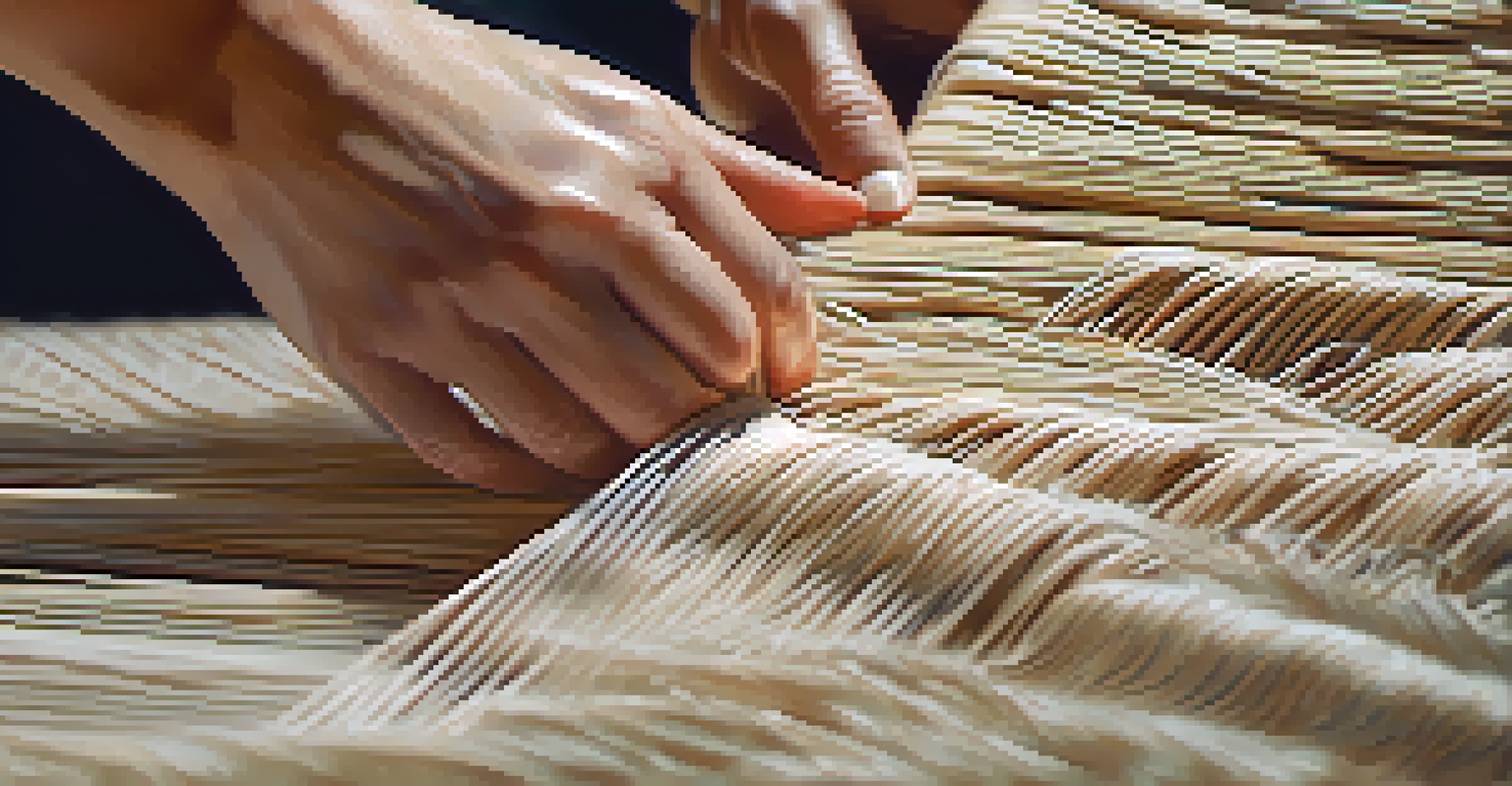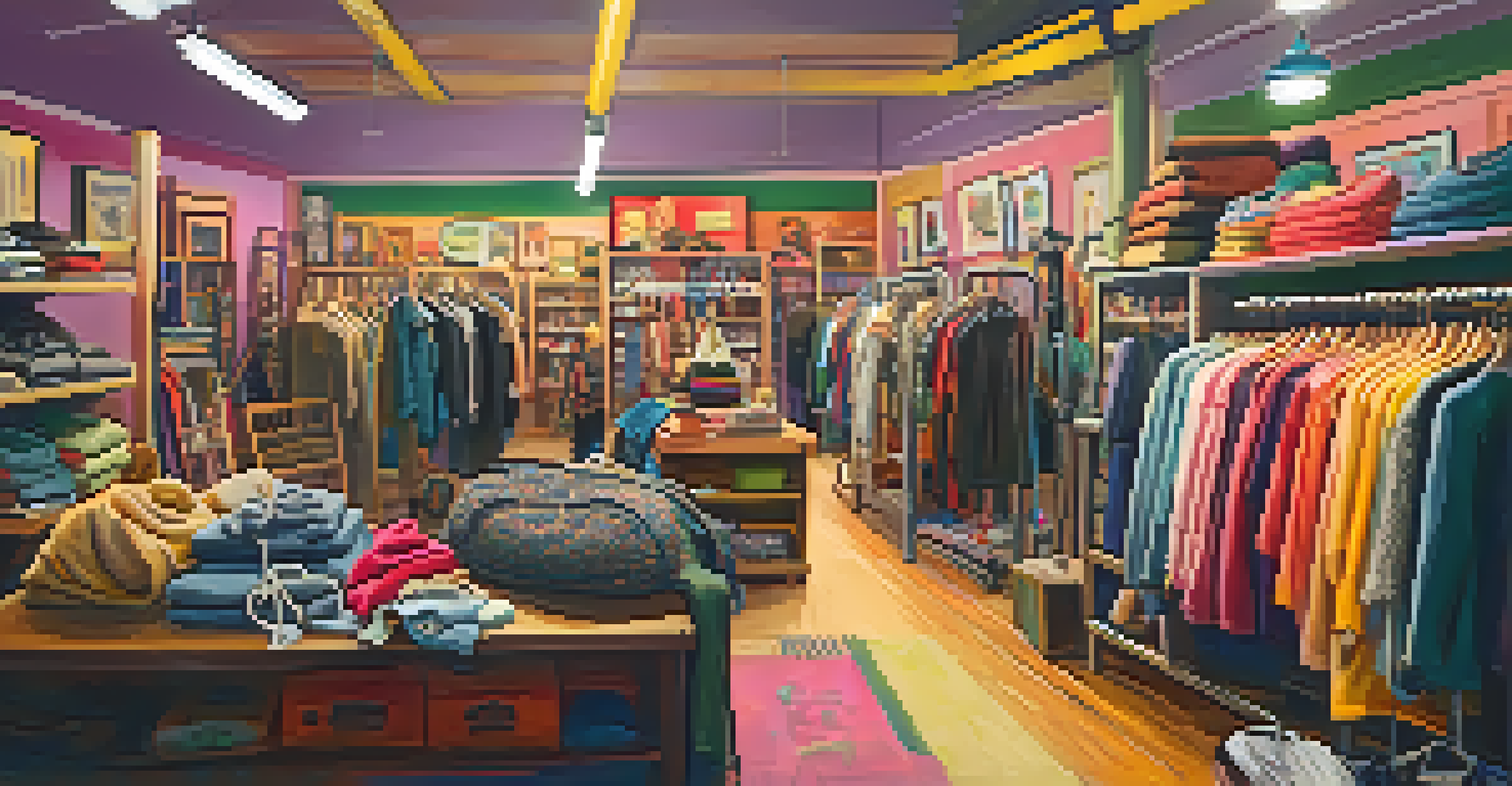Circular Fashion: Rethinking Waste in the Fashion Industry

Understanding Circular Fashion and Its Importance
Circular fashion is a revolutionary concept aimed at minimizing waste in the fashion industry. It emphasizes the reuse, recycling, and upcycling of materials to create a closed-loop system. This approach contrasts sharply with the traditional linear model, where products are made, used, and discarded, resulting in significant environmental impact.
Fashion is the second most polluting industry in the world, right after oil. We can’t afford to ignore it any longer.
By adopting circular practices, brands can reduce their carbon footprint and conserve natural resources. For instance, companies can design clothing that lasts longer and can be easily repaired or recycled. This not only benefits the environment but also appeals to consumers who are increasingly eco-conscious.
Understanding the principles of circular fashion is crucial for both businesses and consumers. As we become more aware of the implications of our purchasing decisions, the shift towards sustainability becomes not just a trend but a necessity for a healthier planet.
The Environmental Impact of Fast Fashion
Fast fashion has taken the world by storm, but it comes at a steep environmental cost. The production of cheap, trendy clothing leads to massive waste, with millions of tons ending up in landfills each year. This throwaway culture not only depletes resources but also contributes to pollution and climate change.

Moreover, the fast fashion industry often relies on unsustainable practices, such as synthetic materials that take hundreds of years to decompose. This raises urgent questions about the long-term viability of our current fashion consumption patterns. As consumers, we have a role to play in challenging these norms and advocating for more sustainable options.
Circular Fashion Minimizes Waste
Circular fashion focuses on reusing and recycling materials to create a sustainable closed-loop system, contrasting with the traditional wasteful linear model.
Recognizing the environmental impact of our clothing choices can empower us to make more informed decisions. By supporting brands that prioritize sustainability, we can collectively move towards a more responsible fashion industry.
Innovative Practices in Circular Fashion
Circular fashion is fueled by innovative practices that challenge traditional manufacturing processes. Brands are now exploring techniques like biodegradable materials, which break down naturally without harming the environment. This innovation not only reduces waste but also enhances product lifecycle.
The future of fashion is not about what you wear but how those clothes are made and how they are reused.
Additionally, many companies are adopting take-back programs, allowing consumers to return their used clothing for recycling or repurposing. This creates a sense of accountability among brands and encourages consumers to think twice before discarding garments. It's a win-win situation that fosters a sustainable relationship between consumers and brands.
Innovation in circular fashion often involves collaboration across industries, from technology to design. This interconnected approach not only drives creativity but also amplifies the impact of sustainable practices, making them more accessible and effective.
Consumer Engagement in Circular Fashion
For circular fashion to thrive, consumer engagement is essential. This means educating shoppers about the benefits of sustainable practices and encouraging them to participate in circular initiatives. From thrift shopping to garment swaps, there are numerous ways consumers can join the movement.
Social media plays a significant role in this engagement, as it allows brands and consumers to share their stories and practices. When consumers see their peers advocating for circular fashion, it creates a ripple effect that encourages others to follow suit. This sense of community can be incredibly motivating.
Consumer Engagement Drives Change
For circular fashion to succeed, consumer involvement and awareness are crucial, empowering individuals to make sustainable choices that influence industry practices.
Ultimately, when consumers feel empowered to make sustainable choices, they drive demand for circular practices. As more people prioritize sustainable fashion, brands will have no choice but to adapt and innovate, leading to a more sustainable future for the industry.
The Role of Technology in Circular Fashion
Technology is a key player in advancing circular fashion, providing innovative solutions to longstanding challenges. From AI-driven design tools that optimize fabric use to blockchain technology that enhances transparency in supply chains, tech is transforming the industry. These advancements help brands reduce waste and improve efficiency.
One fascinating example is 3D printing, which allows for on-demand production of clothing, reducing excess inventory. This technology not only minimizes waste but also allows for greater customization, catering to individual consumer preferences. As a result, the fashion industry can become more responsive and less wasteful.
Moreover, digital platforms are facilitating the rise of rental and resale markets, making it easier for consumers to embrace circular fashion. By leveraging technology, we can create a more sustainable fashion ecosystem that benefits both businesses and the environment.
Challenges in Implementing Circular Fashion
While the concept of circular fashion is promising, several challenges hinder its widespread adoption. One major obstacle is the lack of awareness and understanding among both consumers and brands. Many still cling to conventional practices, viewing sustainability as an afterthought rather than a priority.
Additionally, the initial investment in circular practices can be daunting for smaller brands. From sourcing sustainable materials to redesigning supply chains, the transition requires both time and resources. However, the long-term benefits, such as customer loyalty and reduced waste, often outweigh these initial costs.
Technology Enhances Sustainability
Innovative technologies, like AI and 3D printing, are transforming the fashion industry by reducing waste and improving efficiency in production and supply chains.
Overcoming these challenges requires collaboration and commitment from all stakeholders, including consumers, brands, and policymakers. By working together, we can create a more supportive environment for circular fashion to flourish and ultimately reshape the industry.
The Future of Circular Fashion
As we look to the future, circular fashion promises to reshape the fashion industry in profound ways. With increasing awareness of environmental issues, both consumers and brands are prioritizing sustainability. This shift towards circularity could redefine how we produce, consume, and dispose of clothing.
Emerging trends suggest that we may see more brands adopting circular principles as part of their core business models. This could lead to a more sustainable fashion landscape where waste is minimized, and resources are reused. It’s an exciting prospect that offers hope for a more responsible industry.

Ultimately, the future of circular fashion hinges on our collective commitment to change. By embracing innovative practices and supporting sustainable brands, we can contribute to an eco-friendly fashion ecosystem that values quality over quantity.